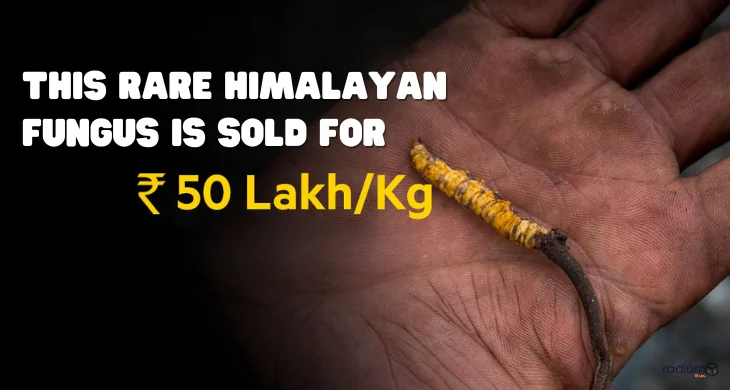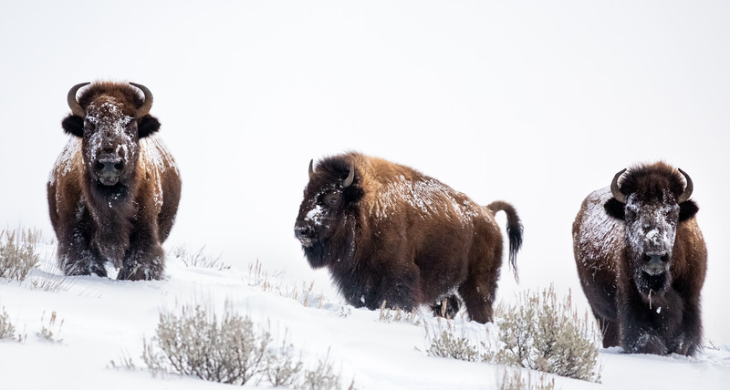Renowned for its mystical healing qualities, Yarsagumba (Ophiocoedyceps sinensis), referred to as Keedajadi in Hindi and Garhwali, is a distinct fungus native to the Himalayas. What sets it apart is its entomopathogenic nature, thriving on insects. Esteemed for its remarkable medicinal attributes, Yarsagumba holds a rich history of use in traditional Himalayan medicines.
Regrettably, this unique fungus teeters on the edge of extinction due to rampant smuggling and excessive grazing by cattle and yaks. Consequently, the scarcity has propelled the price of this fungus to staggering heights, reaching an astounding Rs. 50 lakh per kilogram!
Discover further insights into this precious fungus.
A Fungus Thriving on Insects
Yarsagumba or Keedajadi thrives by infecting the larvae of specific caterpillars, resulting in their demise and mummification. Subsequently, it transforms into a stalk-like structure known as a fruiting body, valued for its herbal properties.
- A Fusion of 400 Fungus Species
- Also known as Yart Swa Gun Bu in Tibetan, signifying ‘herb in summer, insect in winter’. In Nepali, it’s colloquially called Yachagumbu or Yaxagumbu, and referred to as Dong Cong Xia Cao in Chinese.
- Medicinal Benefits: Yarsagumba is renowned for its remarkable medicinal benefits. It has been a part of traditional medicines in the Himalayan region for centuries. Its usage ranges from boosting immunity and energy to treating various ailments. The fungus is believed to enhance stamina, improve respiratory health, and even act as an aphrodisiac.
- Insect-Growing Fungus: One of the intriguing aspects of Yarsagumba is its growth on insects. It infects specific caterpillar larvae, eventually killing and mummifying them. The fungus then develops into a stalk-like fruiting body that is harvested and used for its therapeutic properties.
- Cultural Significance: Known by various names such as Yart Swa Gun Bu in Tibetan, Yachagumbu or Yaxagumbu in Nepali, and Dong Cong Xia Cao in Chinese, Yarsagumba holds cultural and mythological significance in the regions where it is found.
- Threat of Extinction: Unfortunately, the rarity and increasing demand for Yarsagumba have led to unsustainable harvesting practices. Overgrazing of cattle and yaks, coupled with smuggling, has driven this unique fungus to the brink of extinction. Consequently, the price of Yarsagumba has soared, reaching an astonishing Rs. 50 lakh per kilogram.
- Conservation Efforts: The escalating demand and potential extinction of Yarsagumba highlight the urgent need for conservation efforts. Many regions, including Nepal, where the fungus is found in relative abundance, are grappling with the challenge of overharvesting. Preserving Yarsagumba not only ensures its availability for future generations but also safeguards its unique medicinal properties.
Just like any sought-after treasure, this remarkable organism teeters on the brink of extinction, with little effort to preserve it. Nepal grapples with the consequences of over-harvesting. This medicinal treasure and biological wonder deserve conservation.
FAQS:
Ques: What is the rare Himalayan fungus referred to as?
Ans: The rare Himalayan fungus is known as Yarsagumba, scientifically named Ophiocordyceps sinensis.
Ques: Why is Yarsagumba considered special?
Ans: Yarsagumba is renowned for its magical medicinal properties and is used in traditional medicines for its various health benefits.
Ques: How does Yarsagumba grow?
Ans: Yarsagumba is an entomopathogenic fungus, meaning it grows on insects, particularly caterpillar larvae. It infects and mummifies the larvae, eventually developing into a stalk-like fruiting body.
Ques: What are the medicinal benefits of Yarsagumba?
Ans: Yarsagumba is believed to enhance stamina, improve respiratory health, boost energy, and even act as an aphrodisiac.
Ques: Why has the price of Yarsagumba surged?
Ans: The rarity of Yarsagumba coupled with overgrazing of cattle, yaks, and smuggling has led to its potential extinction, causing its price to skyrocket to Rs. 50 lakh per kilogram.
Ques:What is the impact of the increase in demand for Yarsagumba?
Ans: The high demand for Yarsagumba has led to unsustainable harvesting practices, threatening its existence and prompting the need for conservation efforts.
Conclusion:
The tale of the rare Himalayan fungus, Yarsagumba, is a reminder of the delicate balance between nature and human needs. As its value skyrockets and its population dwindles, concerted efforts are necessary to protect this extraordinary gift of nature and its valuable contributions to traditional medicine and biodiversity.




